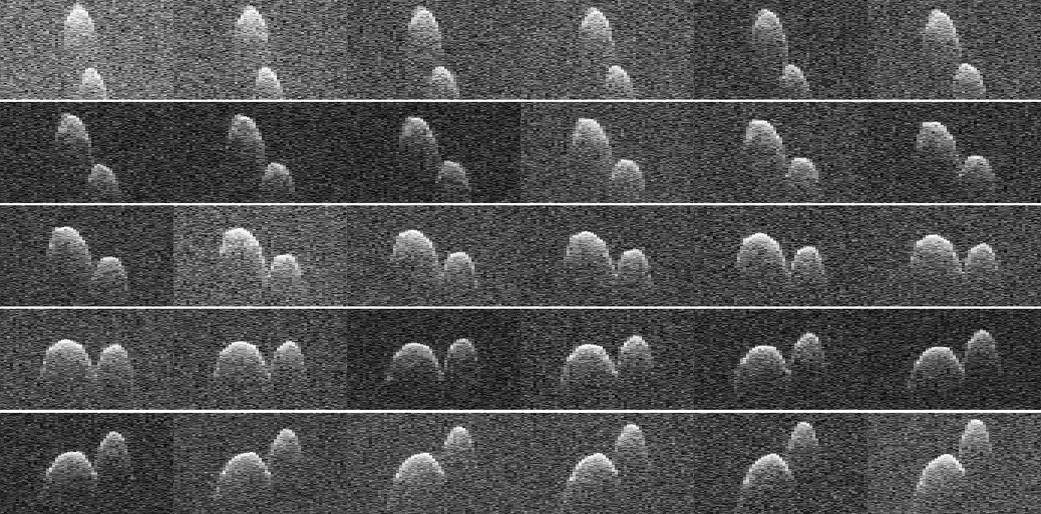This collage of radar images of near-Earth asteroid 1999 JD6 was collected by NASA scientists on July 25, 2015. The images show the rotation of the asteroid, which made its closest approach on July 24 at 9:55 p.m. PDT (12:55 a.m. EDT on July 25) at a distance of about 4.5 million miles (7.2 million kilometers, or about 19 times the distance from Earth to the moon).
The asteroid appears to be a contact binary — an asteroid with two lobes that are stuck together.
These views, which are radar echoes, were obtained by pairing NASA’s 230-foot-wide (70-meter) Deep Space Network antenna at Goldstone, California, with the 330-foot (100-meter) National Science Foundation Green Bank Telescope in West Virginia. Using this approach, the Goldstone antenna beams a radar signal at an asteroid and Green Bank receives the reflections. The technique, referred to as a bistatic observation, dramatically improves the amount of detail that can be seen in radar images. The new views obtained with the technique show features as small as about 25 feet (7.5 meters) wide.
The images show the asteroid is highly elongated, with a length of approximately 1.2 miles (2 kilometers) on its long axis.
JPL manages the Near-Earth Object Program Office for NASA’s Science Mission Directorate in Washington. JPL is a division of the California Institute of Technology in Pasadena.
More information about asteroids and near-Earth objects is at: http://www.jpl.nasa.gov/asteroidwatch. More information about asteroid radar research is at: http://echo.jpl.nasa.gov/.
More information about the Deep Space Network is at: http://deepspace.jpl.nasa.gov/dsn.
Image Credit: NASA/JPL-Caltech/GSSR




























